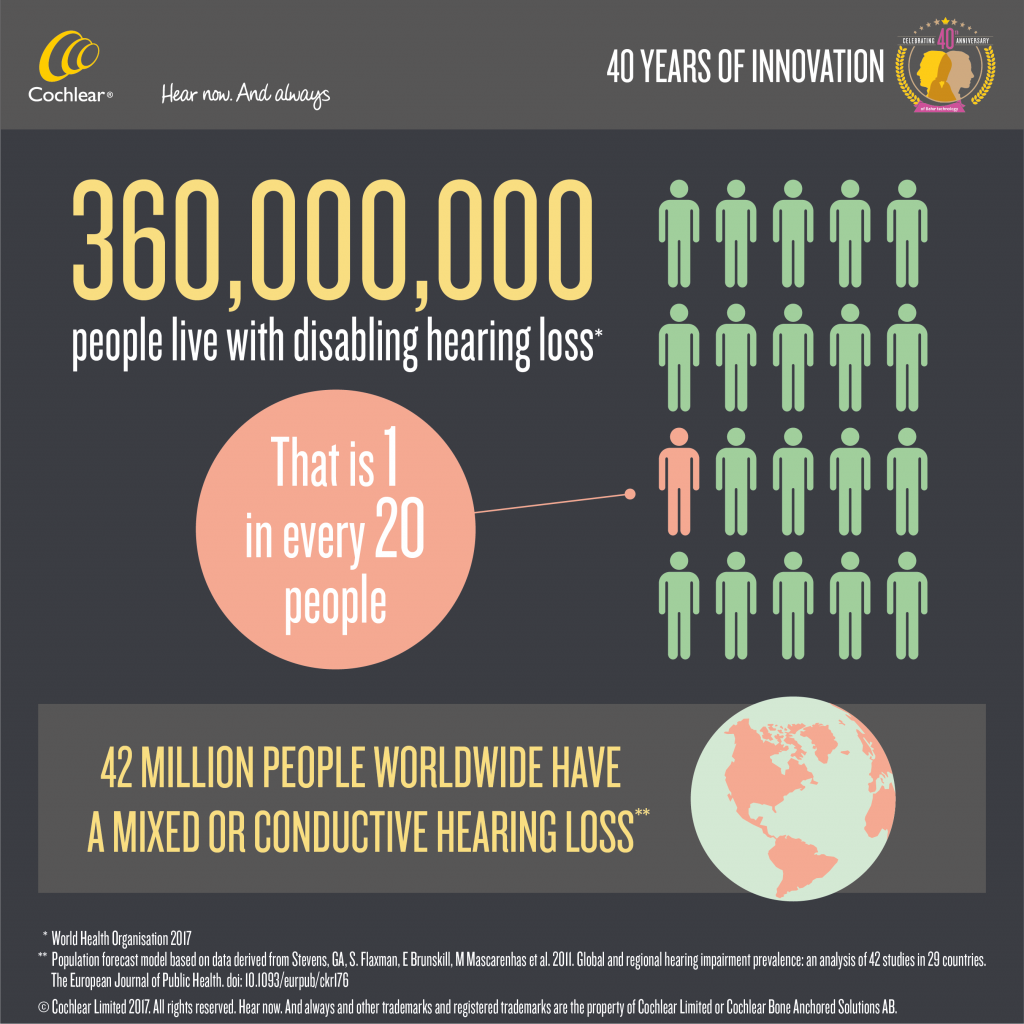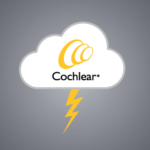As a treatment option for hearing loss the Baha system is more successful than middle ear surgery or hearing aids.1
For adult patients with mixed or conductive hearing loss a bone conduction hearing solution may be the best treatment option. Through bone conduction, sound is conducted naturally through the bone directly to the cochlea, independent of the outer and middle ear. The Cochlear™ Baha® System leverages this natural process by amplifying sound signals, converting them into vibrations and transmitting them to an implant anchored in the temporal bone. Implantable bone conduction is, therefore, an effective hearing solution for people with conductive or mixed hearing loss because it bypasses any problems associated with the outer or middle ear. Many hearing care professionals agree that for these types of problems, the Baha system is a more effective solution than air conduction devices.2 Part of what makes the Baha System unique is that patients can test it out before they commit to surgical implantation.
Candidacy
Candidacy evaluation for an implantable bone conduction system includes audiological testing as well as a personal trial with the Baha System. The patient’s air-bone gap can be a guide to the benefits that can be expected from choosing a Baha System. Comparing the results of speech testing in sound field, with and without the sound processor, can also be useful.
Some recommended tests for mixed and conductive hearing loss include:
- Pure tone audiometry
- Listening test
- Speech audiometry
Evaluation
When evaluating adult patients with mixed or conductive hearing loss, an important consideration is the type of medical condition that has caused the hearing loss. For some indications, such as chronic otitis media and allergies, an implantable bone conduction may be the only feasible solution,3-5 regardless of the size of the air-bone gap.
Some common causes of mixed and conductive hearing loss include:
- Atresia/Microtia
- Allergies (serous otitis media)
- Cholesteatoma
- Chronic mastoiditis/mastoid cavity
- Chronic Suppurative Otitis Media
- Congenital aural atresia
- Draining ears
- Ear canal stenosis
- External otitis
- Genetics
- Otosclerosis
- Other middle ear dysfunctions
Treatment
When treating a patient with mixed or conductive hearing loss, the first line of treatment is middle ear surgery and/or hearing aids. If the first line treatments are not successful, the suggested second line treatment is an implantable bone conduction system. A recent research survey of 29 clinicians that use the Baha system as a treatment option for hearing loss shows that the Baha system is more successful than the first line of treatment.1
Patients with mixed or conductive hearing loss may benefit from a Baha System. Patients with mixed or conductive hearing loss performed better in noise with a Baha system than an acoustic hearing aid and 82% (27/33) of users prefer a Baha sound processor to a power hearing aid.6
If you are interested in bringing the Baha system into your clinical practice, please reach out to your Cochlear Field Team today. Don’t know who your Field Team members are? Call: 1-800-523-5798 or 303-790-9010 and we can connect you today!
If you are already a Baha provider, please right-click and save the infographic below to use during counseling.
References:
-
Cochlear Baha: Patient Research [Data on file] 2017 June.
-
Snik AF, Mylannus EA, Proops DW, et al. Consensus statements on the BAHA system where do we stand at present? The Annals of Otology, Rhinology & Laryngology 2005; 195:1-12.
-
Hol MK, Snik AF, Mylanus EA, Cremers CW. Long-term results of boneanchored hearing aid recipients who had previously used air-conduction hearing aids. Archives of Otolaryngol Head Neck Surg. 2005;131(4):321-5.
-
McDermott AL, Dutt SN, Reid AP, Proops DW. An intra-individual comparison of the previous conventional hearing aid with the boneanchored hearing aid: The Nijmegen group questionnaire. J Laryngol Otol. 2002;116 Suppl. 28:15-9.
-
De Wolf MJ, Hedrix S, Cremers CW, Snik AF. Better performance with bone anchored hearing aid than acoustic devices in patients with severe air-bone gap. Laryngoscope. 2011;121:613-16
-
Mylanus EAM, van der Pouw KCTM, Snik AFM, Cremers CWRJ. Intraindividual Comparison of the Bone-Anchored Hearing Aid and Air-Conduction Hearing Aids. Arch Otolaryngol Head Neck Surg. 1998;124(3):271–276. doi:10.1001/archotol.124.3.268





